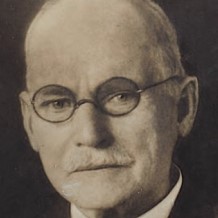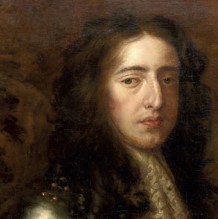ON THIS DAY
Published in Issue 3 (May/June 2021), News, Volume 29BY AODHÁN CREALEY
MAY
26/1900

Above: ‘Dynamite’ Luke Dillon, ‘the revolutionary who never saw his native land’, in his later years.
Luke Dillon, a leading light in the Fenian dynamite campaign (1881–5), was sentenced to life imprisonment along with two others for attempting to bomb the Welland Canal in Canada, an important shipping lane at the time for Britain, then embroiled in the Boer War. There was little in ‘Dynamite’ Luke’s early life to foretell such notoriety. Born in Leeds to a couple who had fled the ravages of the Famine in their native County Sligo, he was just six years of age when his family moved to New Jersey. At the age of eighteen he joined the US Army, served in the Indian Wars, married and settled down in Philadelphia as a shoemaker, specialising in the manufacture of slippers. And then he joined Clan na Gael, fell under the influence of the so-called ‘Triangle’ and became a dedicated recruit for their mission ‘to bring the fight for Irish independence to the heart of the British Establishment’. He made two trips to London. In May 1884 he placed a bomb in a public toilet underneath Scotland Yard, which devastated the offices and records of the Special Irish Branch, established a year earlier to combat the ‘dynamiters’. In January 1885 he returned, placing two bombs in the House of Commons as others attempted to blow up the Tower of London. And he remained steadfast to the end. Refusing appeals by Clan na Gael leaders to admit his guilt and petition the Canadian government for clemency—‘the rest of my life,’ he declared, ‘would not be worth such a surrender of principle’—he served his full sentence and promptly rejoined Clan na Gael. ‘The revolutionary who never saw his native land’ died in 1930 at the grand old age of 81.
01/1171
Diarmaid MacMurrough (c. 61), king of Leinster and key instigator of the Norman invasion of Ireland, died in Ferns ‘without a will, without penance, without unction, as his evil deeds deserved’, according to the Four Masters.
03/1921
The Government of Ireland Act (1920) came into effect, creating the jurisdictions of Northern Ireland and Southern Ireland.
04/1921
In an incident known as ‘the Smashing of the Van’, IRA volunteers made an unsuccessful attempt to free Brigadier Frank Carty, who was being taken by armed escort to Glasgow’s Duke Street prison. One escorting officer was killed.
05/1821
Napoleon Bonaparte (51), outstanding military leader and emperor of the French (1804–14), died from cancer as a prisoner of the British on the island of St Helena.
11/1971
Seán Lemass (71), revolutionary, founding member of Fianna Fáil and taoiseach (1959–66), died.
15/1971
Sir Tyrone Guthrie (71), theatre producer, died at his home, Annaghmakerrig House, Newbliss, Co. Monaghan, now a retreat for artists and writers.
22/1971
Members of the Irish Women’s Liberation Movement held a protest against the law banning the importation of contraceptives by travelling to Belfast by train, purchasing contraceptives and waving them at customs officials on their return to Connolly Station, Dublin. No arrests were made.
23/2011
Barack Obama, 44th president of the United States, made a one-day visit to Ireland, during which he visited his distant cousins in Moneygall. Co. Offaly, and addressed a crowd of 25,000 in College Green, Dublin.
24/1921
In the general election to the parliament of Northern Ireland, the first in the UK to be held under proportional representation, the Unionist Party won 40 seats, with Sinn Féin and the Irish Parliamentary Party taking six seats each.
25/1921
In an operation involving almost 200 IRA Volunteers, the Custom House in Dublin, the centre of local government, was occupied and burnt. Five Volunteers were killed and over 80 arrested.
JUNE
30/1690

Above: William of Orange—had a close shave the day before the Battle of the Boyne when grazed by an enemy musket-ball.
Eve of the Battle of the Boyne. Early that morning, William led his multi-national army south from their camp in Loughbrickland, north of Newry, through Dundalk, where he was joined by the Duke of Schomberg, who had wintered there, and on through Ardee, arriving at the Boyne in the early afternoon. Shortly afterwards he had a lucky escape. As both armies surveyed each other across the river, exchanging sporadic fire, an enemy ball killed a soldier and two horses directly beside him, and a second, according to a witness, grazed the king’s right shoulder blade, ‘taking away his outward coat, his chamois waistcoat and his shirt and issuing a spoonful of blood’. At four in the afternoon, having had his wound dressed and his arm placed in a sling, William dined on the field and at nine called a council of war. His chief commanders, Schomberg and his cousin, the Count of Solms, sharply disagreed on tactics. Schomberg proposed that the main part of the army should perform a flanking movement, involving a roundabout march of several miles, to cross the Boyne where it bends at Rosnaree, thus attacking the Jacobites’ left flank. Solms, however, favoured a single frontal attack at Oldbridge. William eventually compromised, allowing 10,000 men to be sent to Rosnaree but concentrating the main attack at Oldbridge. Orders were then given that the troops should be ready to march at break of day, with green sprigs in their hats to distinguish them from James’s men, who, it was understood, would wear pieces of white paper. It was after midnight when William retired to his tent ‘impatient for the approaching day’.
01/1921
The Kerry IRA ambushed a detachment of Black and Tans and RIC at Castlemaine, Co. Kerry, killing three, including an RIC district inspector. The IRA lost one Volunteer.
05/1981
It was reported that five men in California were suffering from a rare form of pneumonia that was found in patients with weakened immune systems—the first recognised cases of AIDS, which was to kill over 30 million worldwide.
07/1921
Patrick Maher and Ned Foley were executed for the killing of two policemen during the rescue of Seán Hogan at Knocklong railway station in May 1919. They were the last to be executed prior to the Truce.
13/1941
The Rosslare–Fishguard ferry Patrick was sunk by the Luftwaffe a few miles off Fishguard. Twenty-three lives were lost.
22/1921
King George V formally opened the new Northern Ireland parliament, sitting in Belfast, with an impassioned appeal for peace in Ireland. Only the Unionist MPs were in attendance.
24/1921
Three British soldiers and two civilians were killed when the IRA detonated a mine in Adavoyle on the Louth/Armagh border under a train which was transporting King George’s cavalry escort, deployed in Belfast two days earlier, back to Dublin. Eighty horses were also killed.
25/2011
The last British troops pulled out of South Armagh. During the period 1970–97, the IRA killed 165 members of the British security forces in the area.
27/1951
Mary McAleese, barrister, journalist, academic and president of Ireland (1997–2011), born in Ardoyne, Belfast, the eldest of nine children.
30/1921
The brothers Richard (24) and Abraham Pearson (19) were executed by an IRA firing party on their farm at Coolacrease in the foothills of the Slieve Bloom Mountains. The pair had been court-martialled for firing on IRA Volunteers, who were cutting down trees on their land for the purpose of mounting a roadblock.
















